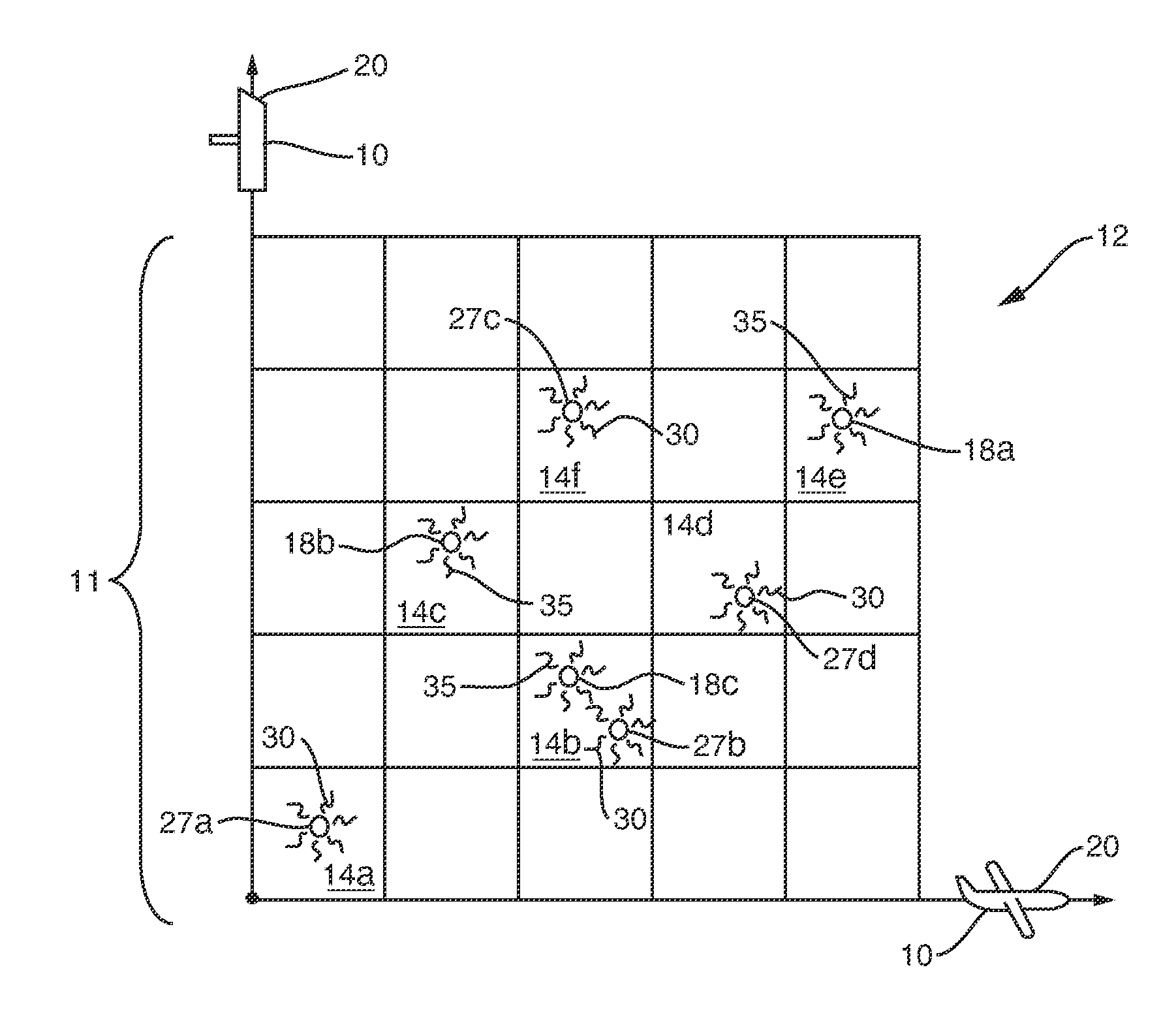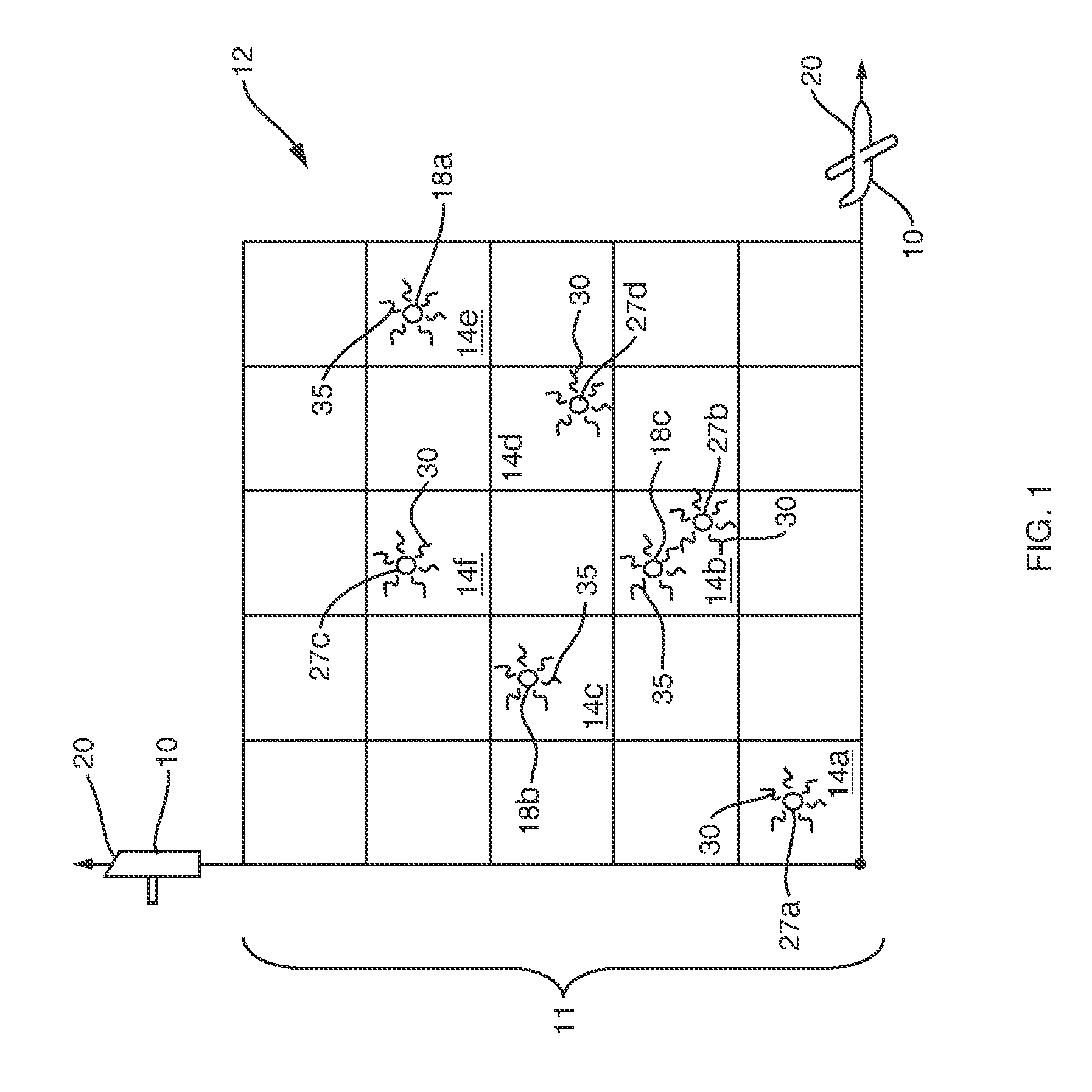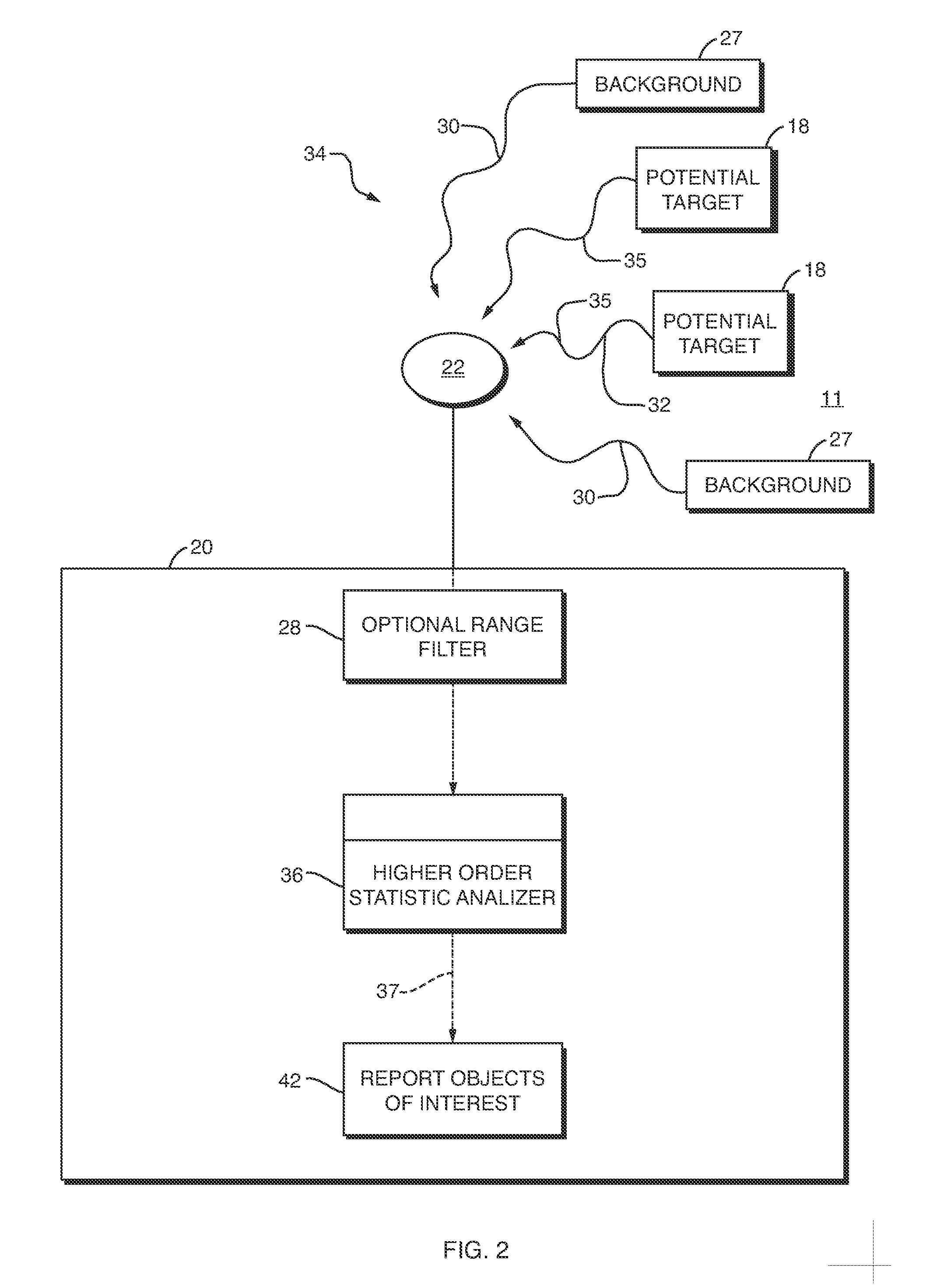Geolocation using high order statistics
a high-order, statistical technology, applied in the direction of instruments, using reradiation, transmission, etc., can solve the problems of difficult identification and differentiation of objects of interest from background clutter, wide range of radio signals of objects,
- Summary
- Abstract
- Description
- Claims
- Application Information
AI Technical Summary
Benefits of technology
Problems solved by technology
Method used
Image
Examples
Embodiment Construction
[0020]Accordingly, rather than pick a single signal, the SEI system 20, FIGS. 1 and 2, according to the present invention, simultaneously scans for all or at least a plurality of EM energy signals emitted from potential targets of interest 18 within the geographic area of interest 11, as will be explained in greater detail below. The system 20 includes a receiving device 22, including an antenna and other associated electronics as well known in the art, for simultaneously collectively receiving substantially all of the EM energy signals 34 emitted within the geographic area of interest 11 and including EM energy signals 35 radiating from man-made potential targets of interest 18 and background or white noise 30 from natural objects 27.
[0021]All of the EM energy signals 34 emitted within the geographic area of interest 11 are typically received and gathered. All of the received signals 34 can be examined or alternatively, a range of signals of interest can be predetermined and filter...
PUM
 Login to View More
Login to View More Abstract
Description
Claims
Application Information
 Login to View More
Login to View More - R&D
- Intellectual Property
- Life Sciences
- Materials
- Tech Scout
- Unparalleled Data Quality
- Higher Quality Content
- 60% Fewer Hallucinations
Browse by: Latest US Patents, China's latest patents, Technical Efficacy Thesaurus, Application Domain, Technology Topic, Popular Technical Reports.
© 2025 PatSnap. All rights reserved.Legal|Privacy policy|Modern Slavery Act Transparency Statement|Sitemap|About US| Contact US: help@patsnap.com



